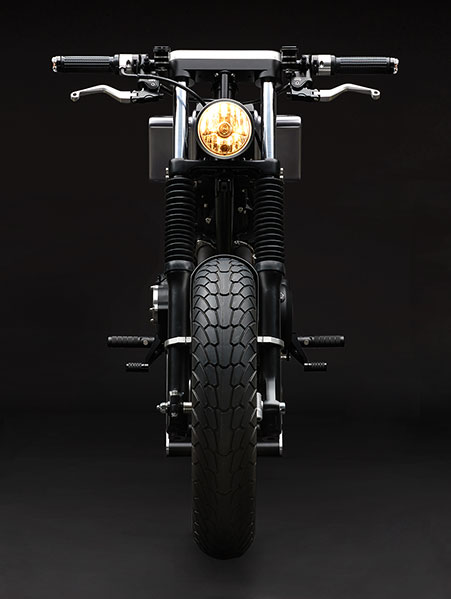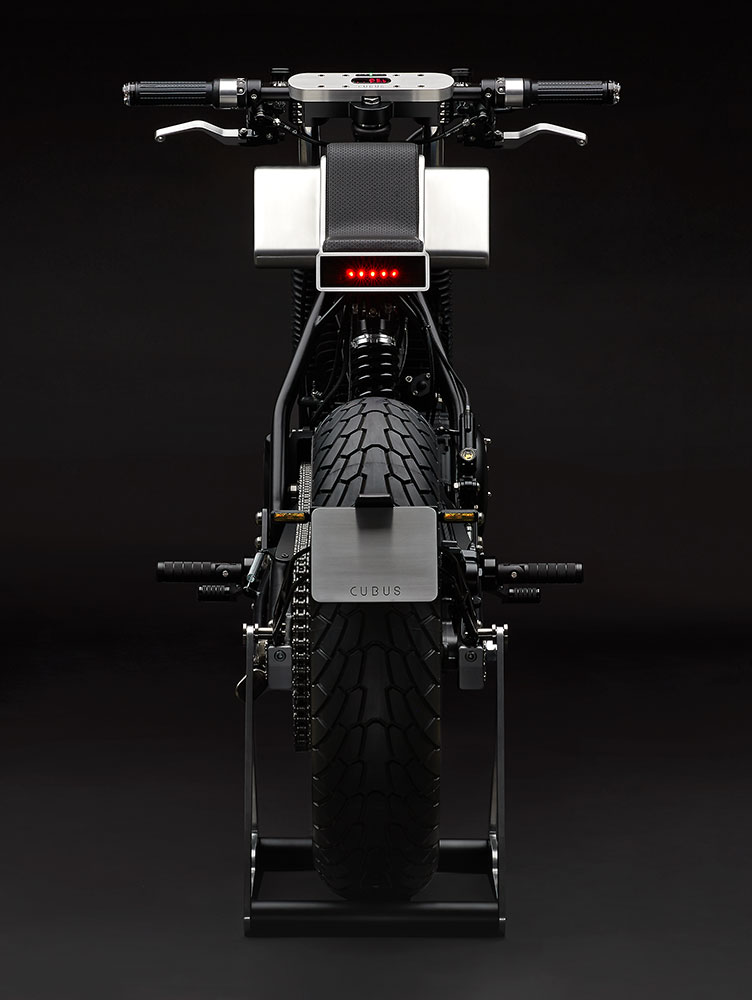





CUBUS is a minimalistic bike, paying tribute to Cubism. Built around 1995 Suzuki GN250, CUBUS is based on clear horizontal lines, supported by diagonal shapes and ribs of the same angle, all connected by smooth radii. Despite the design is extremely important here, it does not suppress the function. Very lightweight, agile, comfortable enough (although it may not seem so), CUBUS is ready for new city adventures.
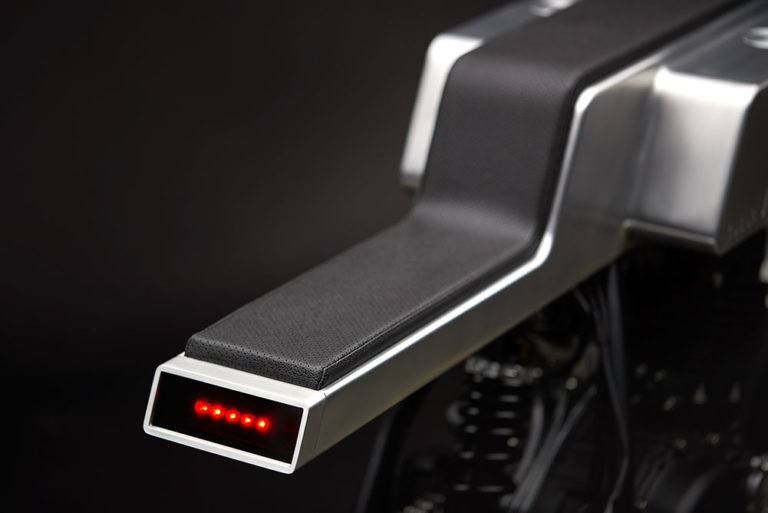
The gap between the two monoliths was eventually filled by a seat, which, in the style of Supermoto bikes, runs up to the handlebars. The seat looks uncomfortable, but surprisingly, it’s not. The padding consists of three layers of special "rubber-foam", which we know from circuit specials. The cover was sewed from perforated synthetic leather. The entire seat simply slides into the grooves between the tanks and closes at the end with the taillight. This is fastened with two screws from below and finally the entire cockpit from below is closed with a seat plate.
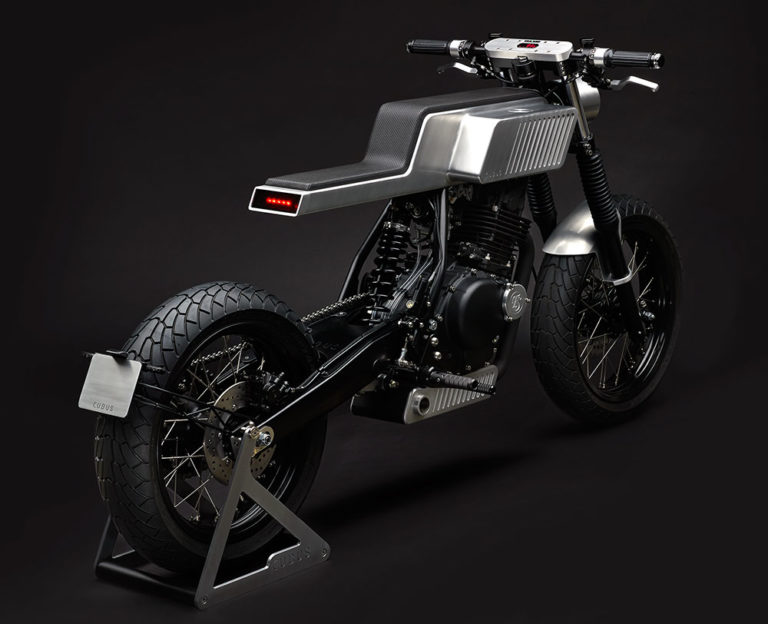
From the side view, the tanks of CUBUS form a single unit, from the taillight to handlebars. Even though it doesn't look like that, it was quite complicated to figure out how to fabricate the tanks. After all, it is a combination of modern and traditional approach. The CNC took care of two parts - a long side plate that connects the seat and the tank, and a small, ribbed plate that forms the side of the tank. The actual body of the tank itself was bend traditionally, by hand, from 2 mm aluminum sheet. The most complicated thing was to hit the four radii that form the side ribbed plate. And then just weld everything together and grind, grind, grind - to make it look like one, uniform piece. Exactly two pieces, not to forget 🙂
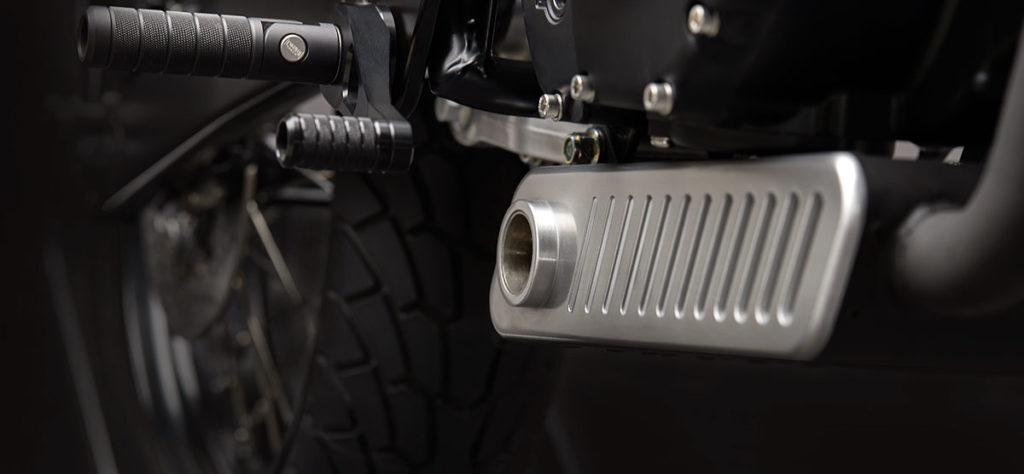
A small copy of the tank side plate is the muffler. It respects and multiplies the design of the tank. And it’s really a silencer. It has an
amazing sound that was tuned by the right combination of internal segments. Since the small GN cylinder has two exhaust ports, this
allowed to cross these two pipes in the muffler and lead them into one perforated stainless-steel pipe. By the crossing, the sound was
directed straight into the sound-insulating cotton wool, so that the sound does not fly straight through the pipe, as with classic motorcycle
shock absorbers, but it directly hits the acoustic wool, which significantly absorbs the sound.
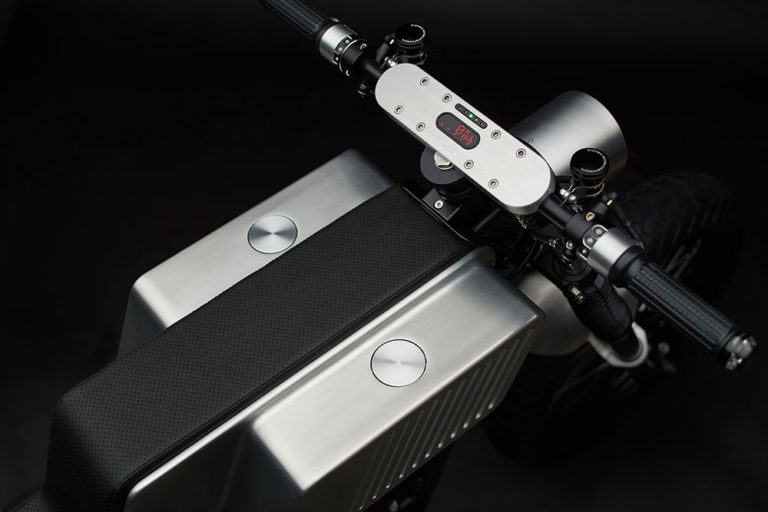
The handlebars are untraditionally straight. They create the illusion that they are going through the upper yokes as one piece. But it's not possible because of the electricity, hidden underneath. They are made of two separate tubes anchored to the yokes. The upper and lower yokes are custom odeled, and CNC milled. The upper yokes are housing a small tacho/speedo meter and LED indicators from Motogadget. There are also switches on handlebars from the same German company. The challenge was to find a throttle to match the sexy switches from Motogadget. Since they do not exist, they had to be made. And to balance the design of the handlebars, a filler roller on the other side was attached - with the same diameter and length as the throttle. Of course, to make it all fit, new brake and clutch lever clamps with the same diameter were made as well. And also, the levers to match the design of the motorcycle were designed and milled on CNC. And finally, the handlebars are ended again with Motogadget product – the M-Blaze turn signals.
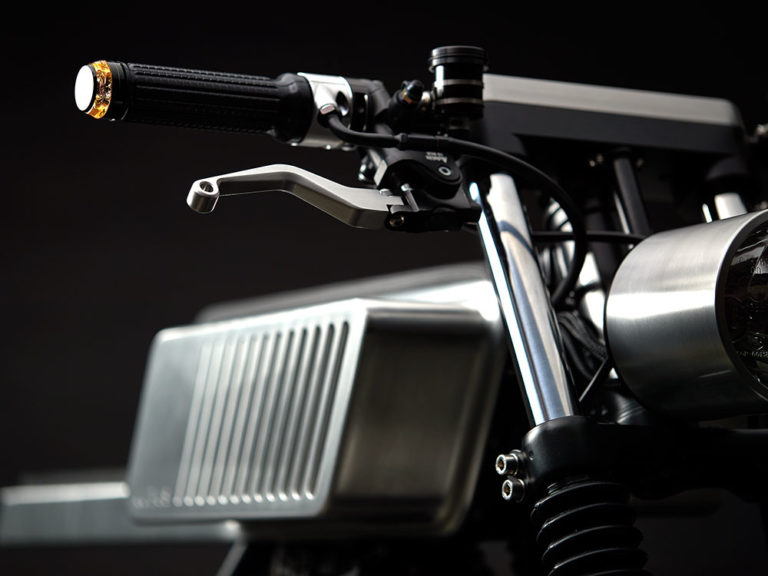
The fun thing was the lights. It’s clear that you won't buy the headlight which would match your design sketch. So, you must fabricate it. However, it must be CE certified. So, a standard headlight with a disgusting plastic body was bought, and a new front and rear housings were made on CNC. And then the body was made traditionally again. A sheet aluminum was put in a slip roller to make a cylinder with a precise diameter. Welded, glued to the front housing, and grinded to make it look like a monolith. The headlight is hanging on an 18mm tube, attached to the lower yoke. The custom-made taillight hides a standard certified taillight with five led diodes inside. The taillight housing needed a cover enough dark to hide the original light, but reasonably transparent, to let the light safely beam. The solution was a plexiglass with a special semitransparent coating.
The only pure traditional sheet metal fabrication job on CUBUS is the front fender. Wooden tinsmith hammer, sandbag, English wheel, sheet
metal shrinker, TIG welding and a lot, a lot of grinding. Finally, a water jet for clamps and the coating. Well, the coating was a hard nut to
crack, because of the bare aluminum parts of the bike. These were all grinded by Scotch-Brite and finally coated with the U.S.A. Cerakote,
ceramic varnish – the only varnish, which can be applied on bare and highly polished aluminum.
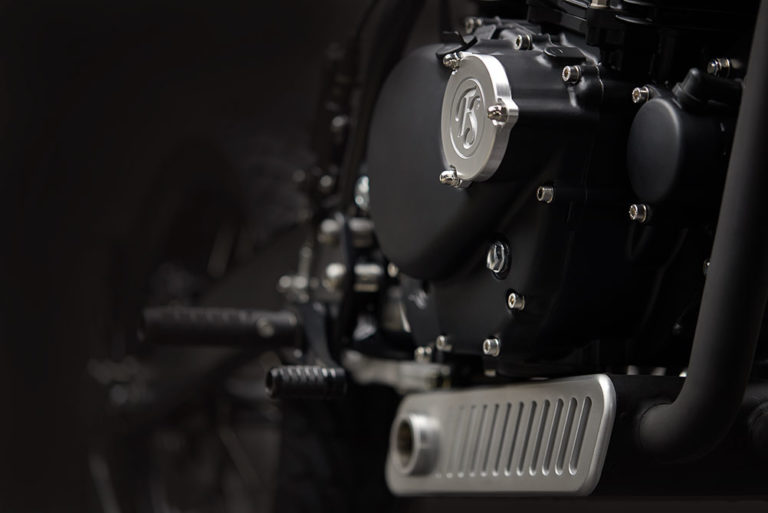
The engine was overhauled, with a superb blackmatte coating and has a new, Mikuni Flatside carburetor with mechanical pre-injection. To pimp it with a little branding, a custom oil filter cover was made with Free Spirit Motorcycles logo milled. The clutch got hydraulics from Magura. A special electro-magnetic valve, hidden under the tank, opens the fuel when the motorcycle wakes up. The waking up is done by a contactless RFID "key" mo.lock from Motogadget. When you switch off the motor, the valve closes automatically. So, no worries that you forgot to close the gas. And if something goes wrong, the valve can also be operated manually.
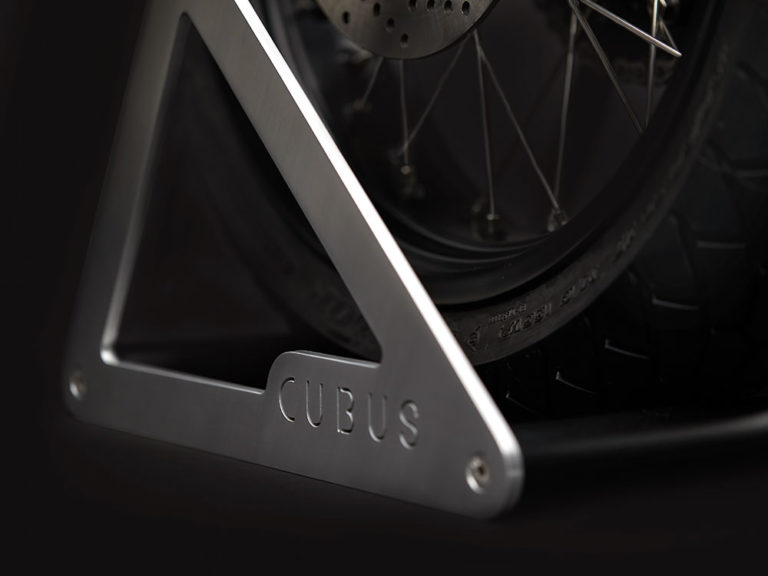
And finally - the stand. Not the kickstand, but the exhibition stand. Since there is no standard fender on the rear wheel, CUBUS lacked the material of the tank, brushed aluminum, on its rear part. And so CUBUS got its own, unique exhibition stand, respecting the lines and materials of the bike. This is part of the package for the future owner.
Building a motorcycle is a tricky business. You can follow the general taste of your target group, which basically means building a massoriented
bike in a custom motorcycle segment. Easy sell, no haters. Or you can deliver something unique. Meaning building a bike for very
few customers, lots of uneasy bike traditionalists writing unpleasant comments. The CUBUS, definitely, follows the second path.
